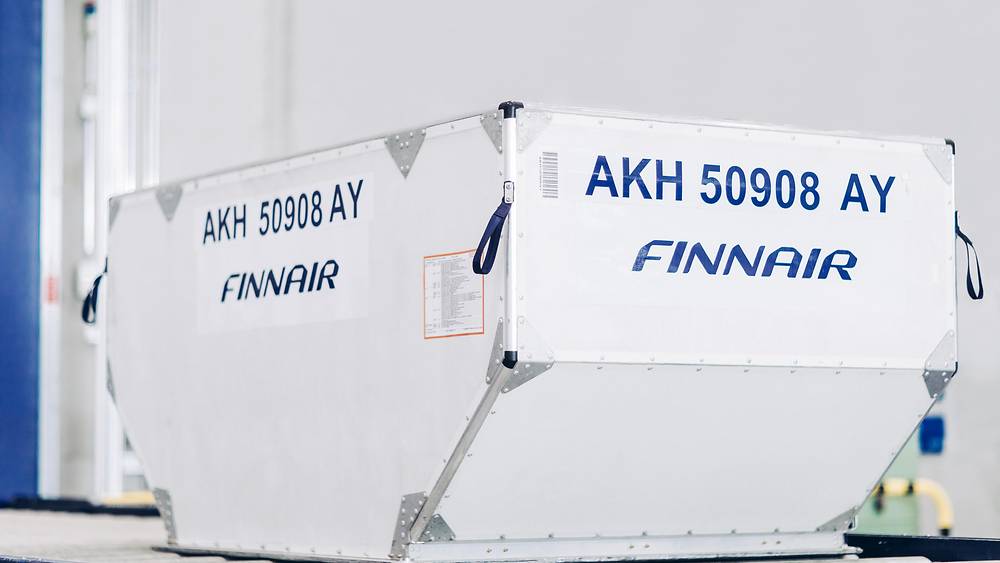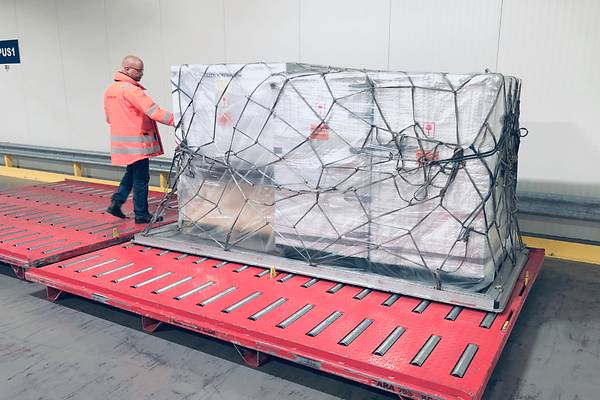Cargo news


Light-weight ULDs and other energy-saving gains by Finnair Cargo
Much of the air cargo industry has heard of Finnair Cargo’s new green cargo hub, but few know about the impressive gains made by using lighter-weight ULDs and pallets. Hanna Salmi, Fuel Efficiency Manager, explains how Finnair is bringing down carbon emissions with lots of help from Finnair Cargo.
Combatting climate change by reducing carbon emissions is a priority at Finnair Cargo, but according to Hanna Salmi, Fuel Efficiency Manager, Finnair won’t be replacing their prized next-generation A350s with electric aeroplanes any time soon. "More time is needed to develop the technology," she says.
Instead, Salmi and her team are focussed on getting the most out of what they currently have; that includes the Airbus A350 long-haul fleet, a fuel-efficient aircraft frequently called the future of air travel which uses 25 per cent less fuel than previous-generation Airbus aircraft.
Finnair was the first European airline and third in the world to operate the A350 and one of the backbones of Finnair’s sustainability strategy is the ongoing renewal of its wide-body fleet. In 2017, the first stage of the fleet renewal was accomplished and Finnair currently operates 14 Airbus A350 aircraft with 5 more on order.
“We’re committed to bringing down emissions by doing many small things every day for every flight,” Salmi says. “Not just in terms of the flight profile, but also in our aircraft loading and weight optimisation.”
Belly cargo reduces passenger footprint
To cargo customers, who also travel as passengers on Finnair flights, Salmi makes the point that if you see commercial freight or mailbags on the ground as you board the plane, it’s going to be good news for your personal carbon footprint.
“Basically, Finnair Cargo is taking a share of the transportation of the aircraft fuselage, so the environmental impact of your flight as a passenger will be smaller, and in that sense you’ll be getting an eco-friendlier service.”
According to Salmi, the ability to balance passenger and cargo weight on each flight is a business and environmental advantage for Finnair compared to mono-load passenger-only flights or freight-only services, which have much less flexibility.
Cargo terminal achieves global environmental standard
The newly opened Helsinki cargo terminal, COOL, has done a lot to enable more precise planning and operations, and thanks to its conception, design and build it’s the recipient of BREEAM certification, marking it out as one of the most sustainable air cargo complexes in the world.
Salmi fondly describes it as the freight equivalent of a walk-in wardrobe. “Imagine suddenly going from a very tiny cupboard for your clothes to a very large one where you can arrange everything systematically, plan your outfits in advance and walk around admiring your lovely things.”
The new terminal now boasts a large refrigerated section for the nearly 100 thousand kilos of seafood that pass through daily, while the non-perishable cargo has its own spacious container hotel. This is complete with warehouse automation guided by sophisticated software to sort and check cargo as flights arrive and depart.


Lighter ULDs and pallets reduce environmental impact
Efficiencies in aircraft loading have also come a long way, with Finnair Cargo continuously exploring new opportunities in lighter-weight unit load devices (ULD) and pallets. “If it weighs more, then it takes more energy to move – and that’s an environmental cost,” says Salmi.
Since 2014, Finnair Cargo has made significant investments in more expensive lighter-weight cargo pallets. “They have a bit shorter shelf life, but they are recyclable, and the weight savings make good environmental and business sense,” Salmi says.


The team is also committed to ensuring the tare weight (the weight of the empty pallets and containers) is as low as possible, relative to the weight of the freight. As a result, Finnair Cargo has achieved a 6.5 per cent reduction in carbon emissions per kilo of transported cargo since 2014 with more gains expected.
“Just the fact that we are measuring our cargo loading on a per kilo basis attests to our level of fine tuning,” says Salmi, who contrasts air cargo with other transport modes, such as sea or rail, which are more likely to measure load units by the tonne.
CO2 emissions from air freight can be offset
Finnair also wants to give passengers and cargo customers a chance to get involved, which is where Finnair Cargo’s carbon offset programme comes in.
Salmi, whose background is in engineering, did the calculations for the Finnair passenger offset programme called Push for Change, as well as the Finnair Cargo equivalent, which was launched in June 2019.
“It’s important that cargo customers have an easy way to purchase offsets,” says Milla Nyholm, Marketing and Sustainability Manager at Finnair Cargo. “We have seen sustained interest from freight forwarders in reducing shipment emissions and that’s why we launched this programme for them.”
Cargo customers can choose between buying an offset to support clean energy projects or investing in biofuel. And they can also look for ways to optimise packaging weight, while keeping their products safe.
“To our customers, a simple model for emissions offsetting makes sense because it’s something that will do into their own corporate responsibility performance reporting,” says Nyholm.
